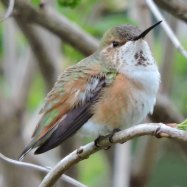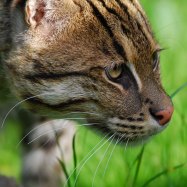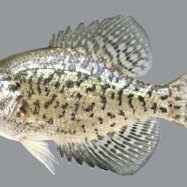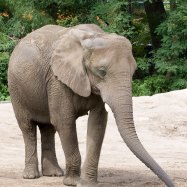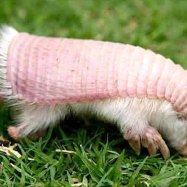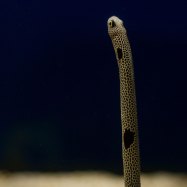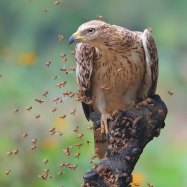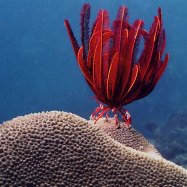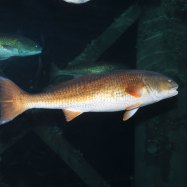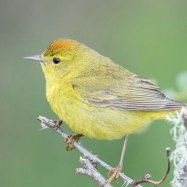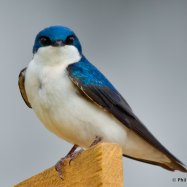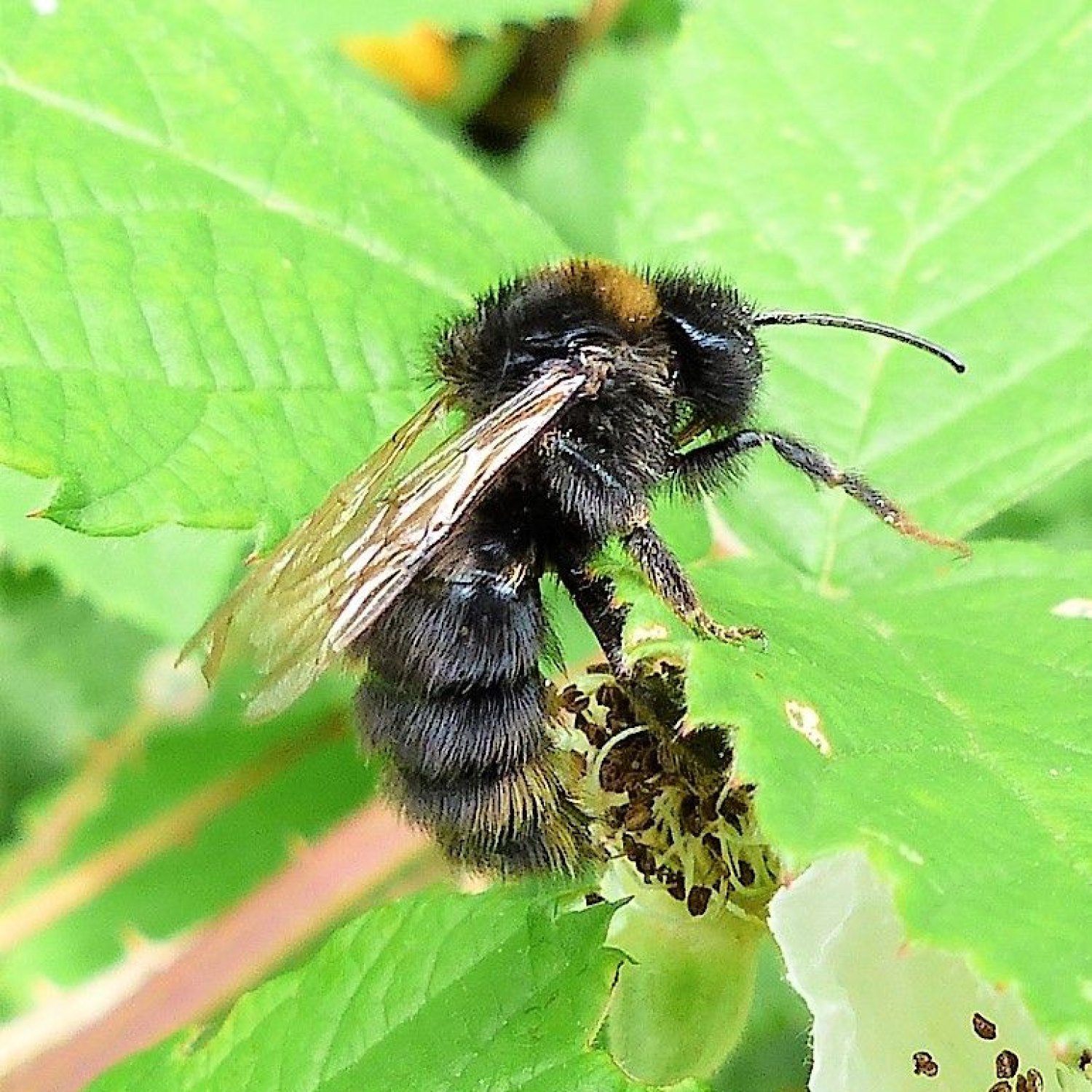
Yellowish Cuckoo Bumblebee
12 - 25 mm
Discover the buzzing world of the Bumblebee, a fascinating member of the Apidae family found in Yellowstone National Park. With its yellow and black striped body, this robust pollinator measures between 12 to 25 mm and plays a vital role in the ecosystem of the Rocky Mountains. Keep your eyes peeled for this busy bee on your next nature adventure! #Yellowstone #Bumblebee #Pollinator #Nature
Animal Details Summary:
Common Name: Yellowish Cuckoo Bumblebee
Kingdom: Animalia
Habitat: Grasslands, meadows, gardens
Cuckoo Bumblebee: The Cuckoos of the Insect World
When you think of cuckoos, the first thing that comes to mind is probably the iconic bird that lays its eggs in the nests of other birds. However, there is another species that shares this unique trait, but it is not a bird – it's a bee! Meet the Yellowish Cuckoo Bumblebee, a fascinating and lesser-known member of the insect world.Scientifically known as Bombus flavidus, the Yellowish Cuckoo Bumblebee is a member of the Bombus genus, which includes over 250 species of bumblebees. This particular species is commonly found in North America, specifically in the United States, Canada, and Mexico Yellowish Cuckoo Bumblebee.
The Unique Cuckoo Behavior
What sets the Yellowish Cuckoo Bumblebee apart from other bumblebees is its interesting and somewhat strange behavior. Just like cuckoo birds, they are "nest parasites," meaning they lay their eggs in the nests of other bee species rather than building their own.Unlike other bumblebees, Yellowish Cuckoo Bumblebees do not have colonies or workers. Instead, they are solitary bees that live a parasitic lifestyle. They invade the nests of other bumblebees, such as the Bombus fervidus or Bombus griseocollis, and lay their eggs on top of the host's eggs. When the cuckoo bee larvae hatch, they consume the host's eggs and food supply, eventually taking over the entire nest.
This behavior may seem cruel, but it is an effective way for the Yellowish Cuckoo Bumblebee to ensure the survival of their species. They do not have to spend time and resources building and maintaining a colony, and by using other bees' established nests, they can guarantee that their offspring will be well-fed and protected.
A Home Fit for a Cuckoo
So, where do these parasitic bumblebees call home? The Yellowish Cuckoo Bumblebee can be found in various habitats, including grasslands, meadows, and gardens Yellow Bellied Sapsucker. However, they are most commonly found in high-altitude areas, such as the Rocky Mountains and Yellowstone National Park.Within these diverse landscapes, the Yellowish Cuckoo Bumblebee chooses to make their home in abandoned rodent burrows, bird nests, and even old bee nests. They prefer nests that are located on the ground, making them easy to access, but they have also been known to use nests in trees and shrubs.
Their choice of nesting sites is not just for convenience; it also provides them with an added layer of protection. Being on the ground, the Yellowish Cuckoo Bumblebee can quickly escape any predators that may threaten their survival.
The Life of a Cuckoo Bumblebee
Aside from their unique nesting behavior, the Yellowish Cuckoo Bumblebee also differs from other bumblebees in terms of their life cycle. While most bumblebees live in colonies and have a queen that lays eggs, the cuckoo bumblebee skips the colony stage entirely.But just like other bumblebees, the Yellowish Cuckoo Bumblebee feeds on flower nectar and pollen. They have a preference for yellow flowers, which is believed to be the reason for their striking yellow coloration. This coloration also serves as a warning sign to predators that they should stay away, as the cuckoo bumblebees are known to have a mild sting.
Their robust body shape and length of 12-25 mm also contribute to their intimidating appearance. However, their lifespan of only one year is rather short compared to other bumblebee species, which can live for up to two years.
The Importance of Yellowish Cuckoo Bumblebees
Despite their parasitic ways, Yellowish Cuckoo Bumblebees play an essential role in maintaining the balance of their ecosystem. They are crucial pollinators, helping to transfer pollen from flower to flower, ensuring the growth and reproduction of various plant species. Without them, the abundance and diversity of plant life would be greatly affected.Bumblebees, in general, play a vital role in pollinating crops and wildflowers. They are so efficient at pollination that some farmers even use them to pollinate their crops, such as tomatoes and blueberries.
In recent years, there has been a decline in bumblebee populations, including the Yellowish Cuckoo Bumblebee. Factors such as habitat loss, climate change, pesticide use, and diseases have all contributed to this decline. This is concerning not only for the bees but also for the plants and crops that rely on them for pollination.
Conservation Efforts for Bumblebees
In light of this decline, there have been increasing efforts to conserve and protect bumblebee populations. The Xerces Society for Invertebrate Conservation, a nonprofit organization, has been working towards conserving bumblebees and other invertebrates for over 40 years.One of their initiatives is the Bumble Bee Watch, a citizen science project that encourages individuals to collect data on bumblebee sightings to help researchers track their population trends and distribution. Additionally, they offer resources and guidance to land managers and farmers on how to provide suitable habitats for bumblebees and other pollinators.
These conservation efforts not only benefit the bees but also have a positive impact on the entire ecosystem. By protecting bumblebees, we are also protecting the plants, animals, and other insects that rely on them for survival.
Final Thoughts
The Yellowish Cuckoo Bumblebee may not be as well-known as its distant bird cousin, but it is just as intriguing and fascinating. Its unique behavior, striking appearance, and crucial role in pollination make it a crucial member of our ecosystem.So, the next time you see a bumblebee buzzing by, don't just dismiss it as a common insect. Take a closer look, and you may just spot a Yellowish Cuckoo Bumblebee, a cuckoo of the insect world, going about its parasitic ways.
References
- Colla, S.R., Gadallah, F., Richardson, L., & Wagner, D. (2012). "Cuckoo bumble bees (Hymenoptera: Apidae) of North America." Zootaxa, 3283, 1-83.
- O'Toole, C. (2008). The Garden Bumblebee. UK: JB Tippett Books Ltd.
- Sheffield, C.S., Chen, L., Ong, S., Ratti, C., & Watson, D.M. (2017). "Validation of a Volunteer-Based Method for Bumble Bee Species Identification, with Applications for the Conservation of Endangered Species." Journal of the Kansas Entomological Society, 90(4), 377-387.
- Xerces Society. (2021). "About Us." Retrieved from https://www.xerces.org/about-us.

Yellowish Cuckoo Bumblebee
Animal Details Yellowish Cuckoo Bumblebee - Scientific Name: Bombus flavidus
- Category: Animals Y
- Scientific Name: Bombus flavidus
- Common Name: Yellowish Cuckoo Bumblebee
- Kingdom: Animalia
- Phylum: Arthropoda
- Class: Insecta
- Order: Hymenoptera
- Family: Apidae
- Habitat: Grasslands, meadows, gardens
- Feeding Method: Flower nectar and pollen
- Geographical Distribution: North America
- Country of Origin: United States, Canada, Mexico
- Location: Yellowstone National Park, Rocky Mountains
- Animal Coloration: Yellowish with black stripes
- Body Shape: Robust
- Length: 12 - 25 mm
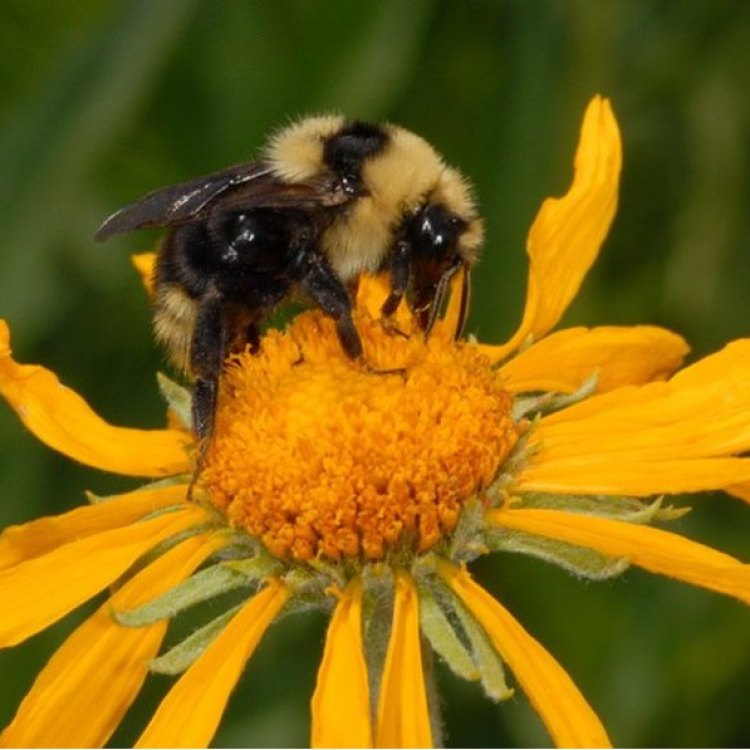
Yellowish Cuckoo Bumblebee
- Adult Size: Larger than worker bees
- Average Lifespan: 1 year
- Reproduction: Sexual
- Reproductive Behavior: Queen mates with males, males die after mating
- Sound or Call: Buzzing sound
- Migration Pattern: Non-migratory
- Social Groups: Colonies with a queen, workers, and drones
- Behavior: Active during the day, pollinators
- Threats: Habitat loss, pesticide use, climate change
- Conservation Status: Endangered
- Impact on Ecosystem: Important pollinators for plants
- Human Use: Used for crop pollination
- Distinctive Features: Yellowish coloration with black stripes
- Interesting Facts: Some cuckoo bumblebees invade the nests of other bumblebee species
- Predator: Birds, spiders, other insects
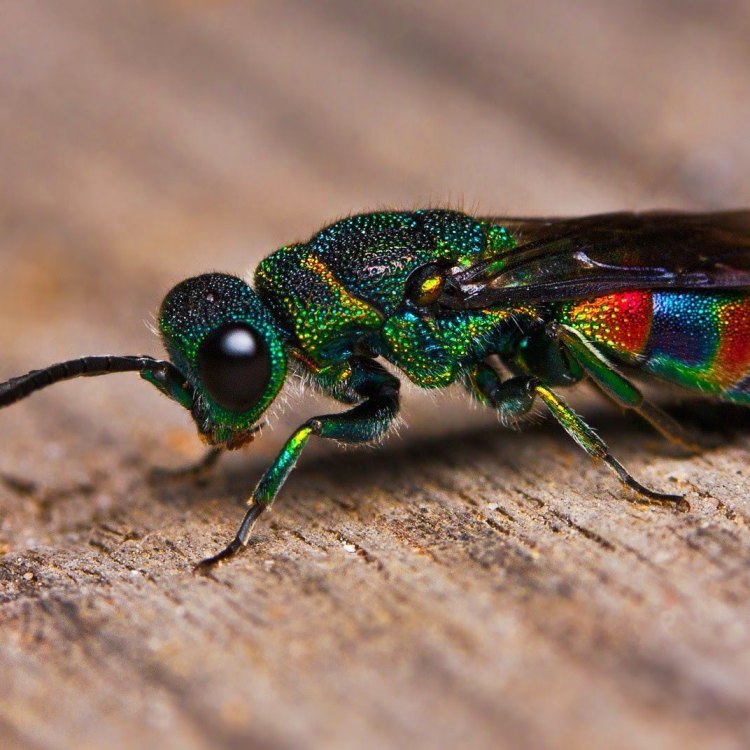
Bombus flavidus
The Fascinating World of the Yellowish Cuckoo Bumblebee: A Story of Survival and Importance
When you think of bees, you may picture a small, black and yellow insect buzzing around flowers. But did you know that not all bees fit this description? There are over 20,000 species of bees that come in a variety of sizes, colors, and behaviors. One of the most unique and fascinating of these species is the Yellowish Cuckoo Bumblebee.As the name suggests, the Yellowish Cuckoo Bumblebee (Bombus bohemicus) is a type of bumblebee, scientifically known as a Bombus bee PeaceOfAnimals.Com. This small but mighty insect has captured the attention of scientists, nature enthusiasts, and everyday people alike with its distinctive features and behaviors. In this article, we will take a closer look at this remarkable bumblebee and discover why it has become a beloved and important species in the natural world.
The Yellowish Cuckoo Bumblebee is native to Europe and Asia, with a particular concentration in Central and Eastern Europe. It is identifiable by its beautiful yellow coloration and black stripes, similar to other bumblebees. However, what sets it apart is its larger size compared to other members of the Bombus genus. While worker bees average around 1.5 cm in length, the Yellowish Cuckoo Bumblebee can grow up to 2.3 cm in length, making it one of the largest bumblebee species. This size difference is important, as we will discover later in this article Yellow Anaconda.
Another interesting fact about the Yellowish Cuckoo Bumblebee is its average lifespan. While worker bees typically live for a few weeks, the Yellowish Cuckoo Bumblebee can live for up to a year. This is due to its unique reproductive behavior, which we will explore in the next section.
Yellowish Cuckoo Bumblebees reproduce sexually, with a queen mating with several males to produce offspring. However, what makes this species stand out is that after mating, the males die. This is quite common among bees, as their sole purpose is to mate and ensure the survival of their species. But for the Yellowish Cuckoo Bumblebee, this means that the queen bee must find new males to mate with for the next generation.
The courtship and mating process of the Yellowish Cuckoo Bumblebee is quite interesting to observe. The queen bee will fly around, emitting a buzzing sound to attract males. Once a male is found, the queen and male will land on a flower and begin their courtship dance. If the male is successful in mating with the queen, he will die shortly after. This may seem sad, but for the survival of the species, it is a necessary sacrifice for the male.
After mating, the queen bee will then go on to build a nest and lay her eggs. The Yellowish Cuckoo Bumblebee is a colonial species, meaning that it lives in large groups called colonies with a queen, workers, and drones. The eggs will hatch into larvae, and the workers will take care of them until they are ready to emerge as adult bees.
The Yellowish Cuckoo Bumblebee is a non-migratory species, meaning that it does not travel long distances in search of better resources or warmer climates. It will stay within its territory, which can range from a few hundred meters to a few kilometers. This type of behavior is important, as it helps to maintain the balance and diversity of the ecosystems they inhabit.
As pollinators, Yellowish Cuckoo Bumblebees play a crucial role in the environment. They are active during the day and, like all bees, collect nectar and pollen from flowers to feed themselves and their young. As they move from flower to flower, they inadvertently help plants reproduce by carrying pollen from one flower to another, enabling the fertilization process. This is vital for the survival and diversity of plant species, making the Yellowish Cuckoo Bumblebee an essential part of the ecosystem.
However, despite their important role, Yellowish Cuckoo Bumblebees are facing various threats that are putting their survival at risk. One of the biggest dangers they face is habitat loss. As human development continues to expand, natural habitats for these bees are shrinking, making it difficult for them to find suitable places to nest and forage for food.
Another major threat is the use of pesticides in commercial agriculture. These chemicals can have harmful effects on both bees and their habitats, leading to a decline in bee populations. Climate change is also a significant threat to the Yellowish Cuckoo Bumblebee. As temperatures rise and weather patterns become more erratic, bees may struggle to adapt, affecting their survival and reproduction.
Due to these threats, the conservation status of the Yellowish Cuckoo Bumblebee is currently listed as endangered on the International Union for Conservation of Nature (IUCN) Red List. This means that urgent conservation efforts are needed to protect these bees and their habitats from further decline.
The decline of Yellowish Cuckoo Bumblebees has not only affected their own species, but it also has an impact on the ecosystem as a whole. As important pollinators, their absence could lead to a decrease in plant diversity and negatively impact other species that rely on these plants for food and shelter. This ripple effect underlines the critical role that these bees play in maintaining a healthy and balanced ecosystem.
Despite their endangered status, the Yellowish Cuckoo Bumblebee has found a way to survive and even thrive in the face of challenges. This is due to their resilience and unique ability to adapt to changing environments. However, to ensure their long-term survival, it is crucial for humans to play a role in protecting these important creatures.
One way that humans have utilized Yellowish Cuckoo Bumblebees is for crop pollination. As we mentioned earlier, these bees are efficient pollinators, and many commercial crops rely on them for reproduction. Farmers often use these bees to pollinate their crops, ensuring a secure food supply and supporting the survival of these bees.
But what makes the Yellowish Cuckoo Bumblebee stand out from other pollinators is its distinctive features. Its yellowish coloration with black stripes makes it easily recognizable and adds to its charm. However, this feature also has a practical use in nature. The bright yellow color serves as a warning signal to predators that this bee may have a stinger and should not be approached. This is a form of camouflage and self-defense, allowing the Yellowish Cuckoo Bumblebee to protect itself and its colony from predators such as birds, spiders, and other insects.
Another interesting fact about Yellowish Cuckoo Bumblebees is that some of these bees have been observed invading the nests of other bumblebee species. This behavior is called kleptoparasitism, and it involves the cuckoo bee laying its eggs in another bee's nest and letting the host bee raise its young. This may seem like a sneaky tactic, but it is a survival technique for cuckoo bees, as they are unable to build their own nests.
In conclusion, the Yellowish Cuckoo Bumblebee is a fascinating and important species in the natural world. Their large size, unique reproductive behavior, and bright coloration make them stand out among other bumblebees. However, their endangered status highlights the threats that all bee species face and the need for urgent conservation efforts to protect their survival. As humans, we have a responsibility to support the survival of these vital pollinators and ensure a healthy and balanced ecosystem for generations to come. So let us all appreciate the Yellowish Cuckoo Bumblebee and take action to protect these amazing creatures.

Cuckoo Bumblebee: The Cuckoos of the Insect World
Disclaimer: The content provided is for informational purposes only. We cannot guarantee the accuracy of the information on this page 100%. All information provided here may change without prior notice.

